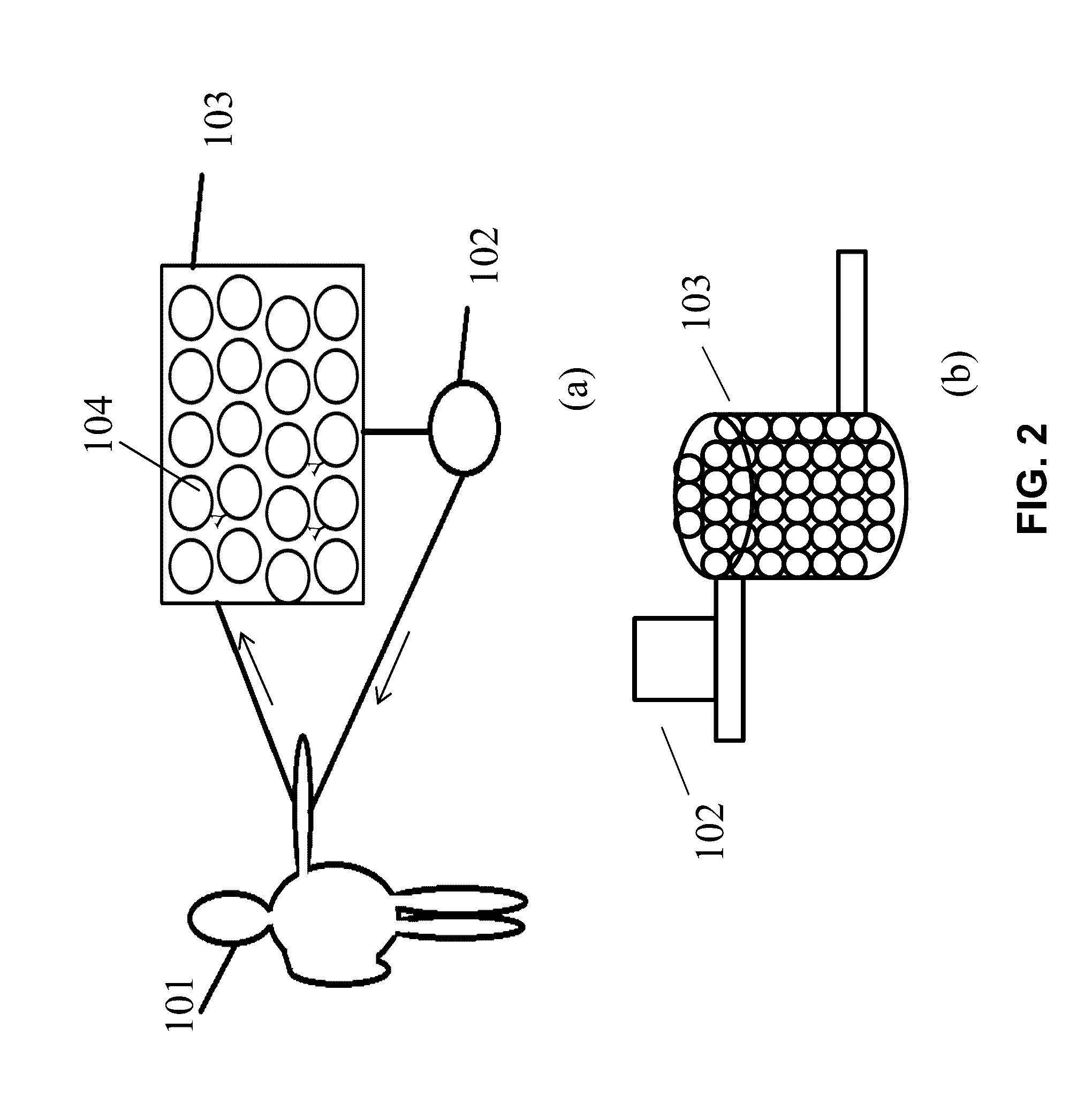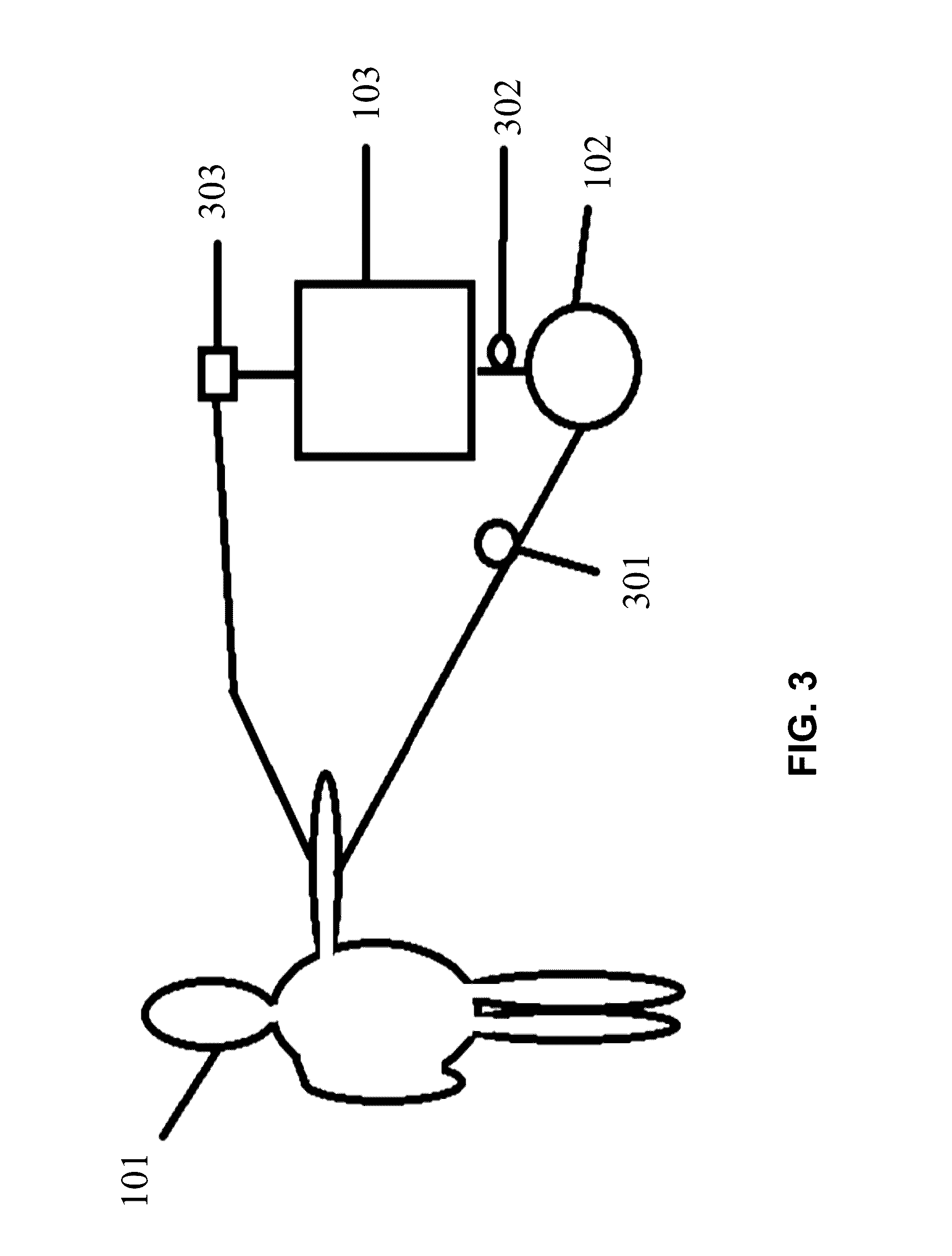Pre-concertation apparatus & method
a technology of apparatus and method, applied in the field of concentrating and preconcentrating disease causing agents, can solve the problems of consuming and limited methods, major bottlenecks in pathogen detection, and taking 18-24 hours to detect pathogens, and achieve the effect of fast analysis
- Summary
- Abstract
- Description
- Claims
- Application Information
AI Technical Summary
Benefits of technology
Problems solved by technology
Method used
Image
Examples
Embodiment Construction
[0053]The present invention relates to capturing disease causing agents from various biological media including food, water, blood, urine, etc. for concentration. Specifically, the invention relates to using binding materials to trap disease causing agents that are desired to be concentrated (removed from sample) for further analysis.
[0054]The main feature of the present invention is an antibody conjugated polymer tube. The media containing pathogens is continuously pumped through the coated tube. As the media is flowed through the tube, the pathogens are captured by antibodies inside the tube. This capture and subsequent continuous flow of sample matrix promotes organism concentration within the tube, as organisms divide and are recaptured. As shown in FIG. 22 and FIG. 23, this method becomes part of the initial incubation and enables extraction of pathogens from the entire volume of sample. The bacterial quantity inside of the tube reaches sufficient levels for detection in an ear...
PUM
 Login to View More
Login to View More Abstract
Description
Claims
Application Information
 Login to View More
Login to View More - R&D
- Intellectual Property
- Life Sciences
- Materials
- Tech Scout
- Unparalleled Data Quality
- Higher Quality Content
- 60% Fewer Hallucinations
Browse by: Latest US Patents, China's latest patents, Technical Efficacy Thesaurus, Application Domain, Technology Topic, Popular Technical Reports.
© 2025 PatSnap. All rights reserved.Legal|Privacy policy|Modern Slavery Act Transparency Statement|Sitemap|About US| Contact US: help@patsnap.com



